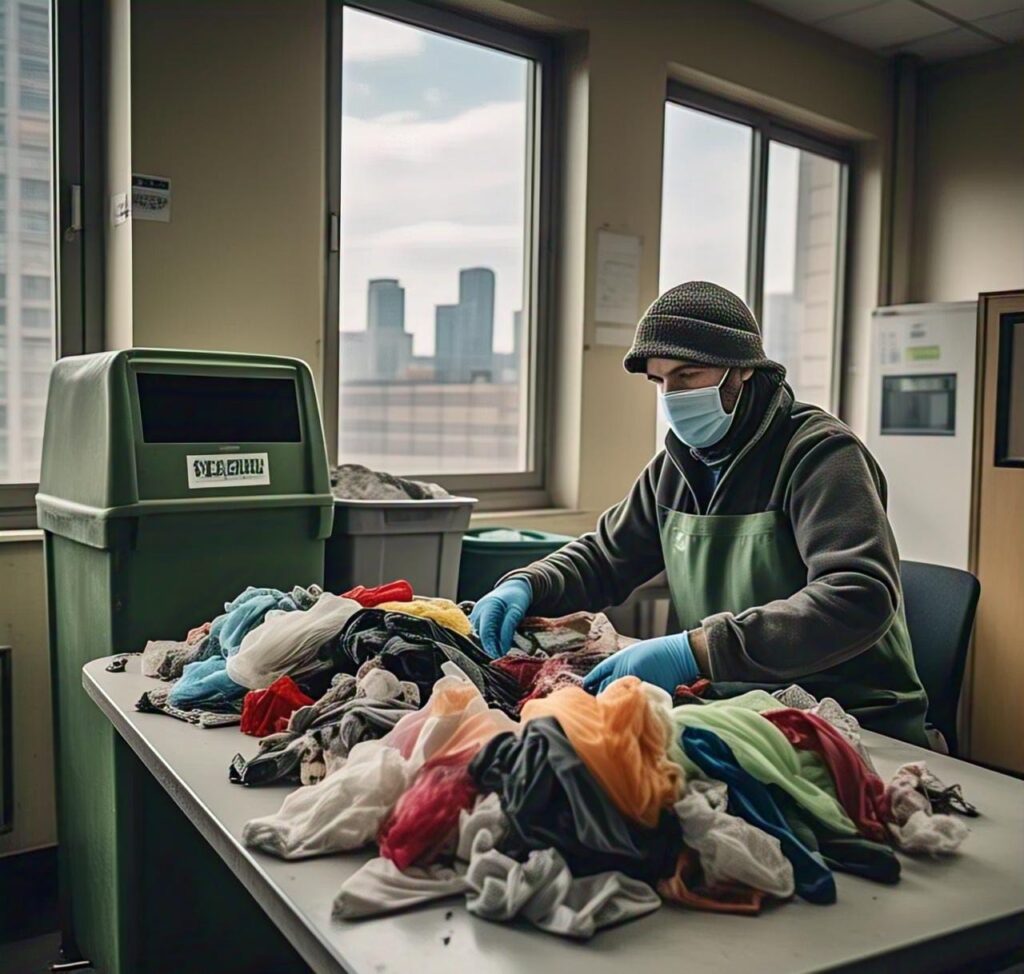Introduction
Textile waste is a growing environmental issue , with millions of tons waste discarded each year. Recycling fabrics like cotton, polyester, and nylon can help reduce landfill waste, conserve resources, and promote sustainable fashion. This post explores the textile recycling process, its benefits, key features, and future prospects.
Overview of Textile Recycling
Textile recycling Process involves collecting, sorting, and processing used fabrics into reusable materials. It plays a crucial role in sustainable fashion by reducing waste, conserving energy, and lowering carbon footprints.
In-Depth Review of Textile Recycling Process for Cotton, Polyester, and Nylon Fabrics
Here’s an in-depth review of the textile recycling process for cotton, polyester, and nylon fabrics:
Cotton Fabric Recycling
Cotton fabric recycling involves breaking down cotton fibers into their raw form and then spinning them into new yarns. The process typically involves:
– Mechanical recycling: Breaking down cotton fibers using mechanical processes, such as shredding and carding.
– Chemical recycling: Breaking down cotton fibers using chemical processes, such as dissolution and precipitation.
Polyester Fabric Recycling
Polyester fabric recycling involves breaking down polyester fibers into their raw form and then spinning them into new yarns. The process typically involves:
– Mechanical recycling: Breaking down polyester fibers using mechanical processes, such as shredding and carding.
– Chemical recycling: Breaking down polyester fibers using chemical processes, such as dissolution and precipitation.
Nylon Fabric Recycling
Nylon fabric recycling involves breaking down nylon fibers into their raw form and then spinning them into new yarns. The process typically involves:
– Mechanical recycling: Breaking down nylon fibers using mechanical processes, such as shredding and carding.
– Chemical recycling: Breaking down nylon fibers using chemical processes, such as dissolution and precipitation.

Benefits of Textile Recycling Process
- Reduces landfill waste by diverting fabrics from disposal.
- Conserves water and energy used in producing virgin textiles.
- Decreases carbon footprint by minimizing greenhouse gas emissions.
- Encourages circular fashion by promoting the reuse of materials.
- Creates job opportunities in the recycling and textile industries.
Features of Textile Recycling Process
- Eco-Friendly Processes: Low-impact techniques reduce environmental damage.
- Closed-Loop Recycling: Ensures continuous reuse of fibers.
- Blended Fabric Solutions: New technologies allow mixed fiber recycling.
- Chemical Innovations: Advanced methods enable better fiber recovery.
- Consumer Participation: Brands are encouraging customers to return old clothes for recycling.
Textile Recycling Process Comparison Table
| Fabric Type | Recycling Method | End Products |
| Cotton | Mechanical & Chemical Recycling | Re-spun yarn, regenerated fibers |
| Polyester | Mechanical & Chemical Recycling | New polyester fabric, PET-derived textiles |
| Nylon | Chemical Recycling | ECONYL fabric, nylon yarn |
Tips for Effective Textile Recycling Process
- Check local recycling programs for fabric drop-off locations.
- Sort fabrics properly to avoid contamination.
- Donate reusable clothes to thrift stores before recycling.
- Support brands using recycled textiles to promote sustainability.
- Reduce textile waste by choosing durable and eco-friendly fabrics.
Future of Textile Recycling Process
The future of textile recycling looks promising with innovations like:
- AI-driven sorting systems for better fabric separation.
- Enhanced chemical recycling for improved fiber recovery.
- Increased consumer awareness leading to higher participation.
- Government policies supporting circular fashion initiatives.
The future of textile recycling looks promising, with emerging trends and technologies set to transform the industry.
– Increased adoption of closed-loop production: Increased adoption of closed-loop production, where old textiles are recycled into new textiles.
– Advances in recycling technologies: Advances in recycling technologies, enabling more efficient and cost-effective textile recycling.
– Growing demand for sustainable textiles: Growing demand for sustainable textiles, driving the adoption of textile recycling and sustainable production practices.
Also Read : 10 Powerful Eco-Friendly Textile Dyeing Methods for Cotton Fabrics
Conclusion
Textile recycling for cotton, polyester, and nylon is an essential step toward sustainable fashion. By adopting recycling practices, we can reduce environmental impact and support a circular economy. Join the movement by choosing recycled fabrics and supporting brands committed to sustainability!
